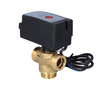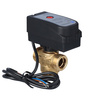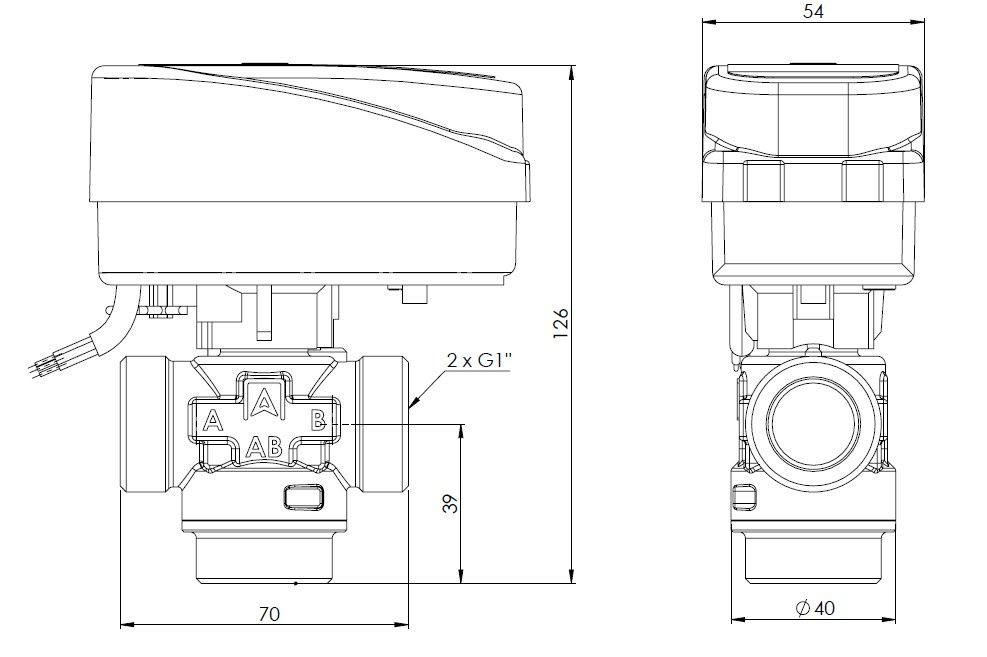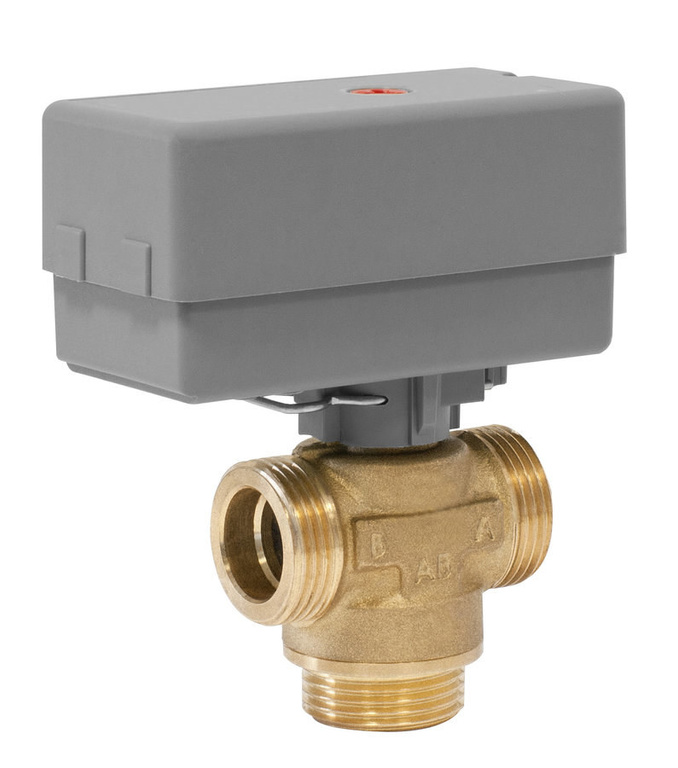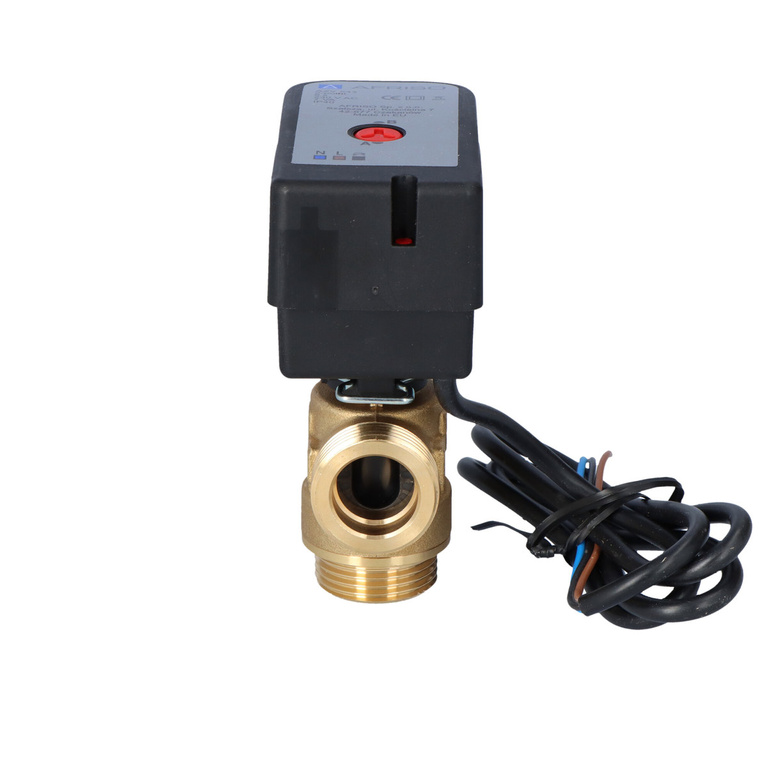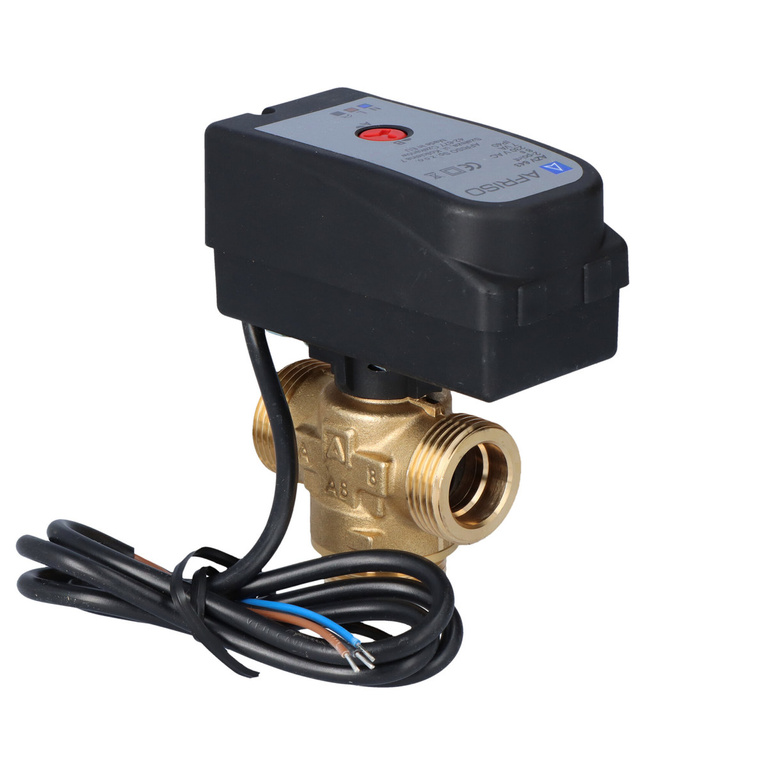AZV 643 3-way zone valve DN20, Kvs=8, external thread G 1 inch
- aZV 3-way zone valves are designed for central heating or air conditioning water systems as switching elements. Zone valves are controlled by SPST signal and can be operated from any thermostat or switch
Subscription products in your shopping cart
Set one delivery frequency for all subscription products in your cart every:
Subscription products in your shopping cart
Brand
Symbol
16 643 00
Producer code
5907718971736
Series
Warranty
Manufacturer's Index
1664300
aZV 643 3-way zone valve - DN 20, G 1", Kvs 8 m³/h
AZV 643 valve is a 3-way diverter valve, used in heating, cooling and hot water systems. The device works in conjunction with an electric actuator controlled by a 2-point signal (ON/OFF). The switching time of the valve is about 8 seconds.
Application
- Switching the flow between two parts of the system
- Central heating, air conditioning and DHW systems
- Installation automation with thermostats or 2-point controllers
- Installation retrofits requiring a simple switching valve
Technical data
| Nominal diameter (DN) | 20 |
| Connection | G 1″ (male thread) |
| Kvs (nominal flow) | 8 m³/h |
| Control signal | 2-point (SPST) |
| Switching time | ~ 8 seconds |
| Supply voltage | 230 V AC |
| Maximum pressure | 10 bar |
| Temperature range of medium | 5 ÷ 80 °C |
Advantages and features
- Simple switching valve - reliable design
- Fast operation time (~8 seconds) - efficient regulation
- Compatibility with 2-point automation
- High versatility in central heating, DHW and air conditioning applications
- Standard G 1″ threaded connection - easy integration into the installation
Installation and operation tips
- Mount the valve in a location that allows easy access to the actuator
- Before commissioning, bleed the installation and check for leaks
- Set the valve's limit stops (0-10 or 10-0), if available
- Avoid operating in conditions outside the permissible parameters (pressure, temperature)
- Regularly check the operation of the valve and the condition of the connections over a long period of operation
Ask a question
Write your opinion



